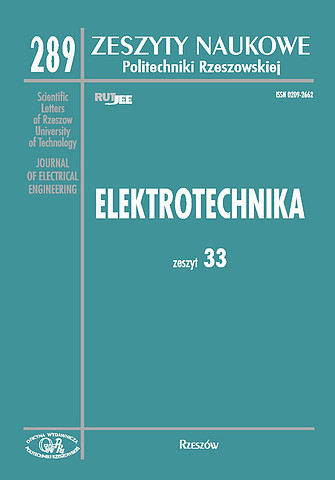Abstract
In radio frequency identification systems a variety of antenna design solutions are being used. Due to the low costs of production and small dimensions, microstrip solutions are frequently used as an antenna design of read/write devices for UHF band. The reason for the intensive development of microstrip technology is the opportunity to develop structures of any shape and parameters, the development of applications supporting their design and the relatively low cost of implementation of such antennas. The rapid development of microstrip technology has promoted the emergence of high-quality microwave dielectric materials, which are used to make printed antenna structures on laminates coated copper. The materials of these structures are characterized by three basic parameters: thickness, dielectric constant and loss factor. Another element that contributed to the development of microstrip antennas, was the emergence of dedicated computer applications in which the numerical method is used (such as finite-element method, finite difference time domain and moments method). The use of such applications supports the process of designing antennas, because there is the possibility to quickly perform numerical analysis on executed construction taking into consideration parameters that characterize the system. The ability to adjust the construction without the need for real systems, lowers the cost of prototyping. The synthesis of an antenna design of read/write devices for UHF band that operates in accordance with the requirements of the electronic product code (protocol ISO/IEC 18000-6c) has been presented in this paper. Based on the prepared model, the parameters which affect the proper functioning of the presented antenna in a given radio communication system have also been identified.
References
[2] Bhartia P., Garg R., Bahl Inder, Ittipiboon A.: Microstrip antenna design handbook, Artech House, 2001.
[3] Brown D.: RFID Implementation, McGraw-Hill, 2007.
[4] Chen J. C., Cheng C. H., PoTsang Huang B., Wang K. J., Huang C. J., Ting T. C.: Warehouse management with lean and RFID application: a case study, Int. J. Adv. Manuf. Technol., Vol. May, 2013.
[5] Dobkin D.: The RF in RFID - Passive UHF RFID in Practice, Elsevier-Newnes, 2007.
[6] Dolgui A., Proth J. M.: Supply Chain Engineering, Useful Methods and Techniques, Springer, 2010.
[7] EPCglobal Inc.: Class-1 Generation-2 UHF RFID Protocol for Communications at 860-960 MHz, Ver. 1.2.0, 2008.
[8] Finkenzeller K.: RFID Handbook, 3-rd Ed., Willey, 2010.
[9] Jankowski-Mihułowicz P., Kalita W., Pawłowicz B.: Problem of dynamic change of tags location in anticollision RFID systems, Microelectronics Reliability, Vol. 48, Issue 6, pp. 911-918, 2008.
[10] Jankowski-Mihułowicz P., Kalita W.: Obszar poprawnej pracy – podstawowy parametr aplikacyjny systemów RFID, Elektronika, nr 8, str. 67-72, 2010.
[11] Jones E., Chung C.: RFID in Logistics - A Practical Introduction, CRC, 2008.
[12] Kochendörfer P.: Entering a secure future, Global Identification, Vol. Oct., pp. 24- 26, 2012.
[13] Lu J. H., Wang S. F.: Planar Broadband Circularly Polarized Antenna With Square Slot for UHF RFID Reader, IEEE Trans. Antennas Propag., Vol. 61, Issue 1, pp. 45-53, 2013.
[14] Medeiros C. R., Costa J. R., Fernandes C. A.: RFID Reader Antennas for Tag Detection in Self-Confined Volumes at UHF, IEEE Antennas Propag. Mag., Vol. 53, Issue 2, pp. 39-50, 2011.
[15] Pergoł M., Zieniutycz W., Sorokosz Ł.: Antena mikropaskowa o poszerzonym paśmie pracy, Wydawnictwo SIGMA NOT, Elektornika, nr 11, s.130-133, 2010.
[16] Sim C., Chi C. J.: A Slot Loaded Circularly Polarized Patch Antenna for UHF RFID Reader, IEEE Trans. Antennas Propag., Vol. 60, Issue 10, pp. 4516-4521, 2012.
[17] Wheeler M.: Automating processes with RFID, Global Identification, Vol. Feb., pp. 10-13, 2013.
[18] Wincza K.: Planarne i konforemne zintegrowane układy antenowe z macierzą Butlera jako siecią formowania wielu wiązek. Analiza, projektowanie i badania eksperymentalne, pp.110-125, Wrocław, 2007.





